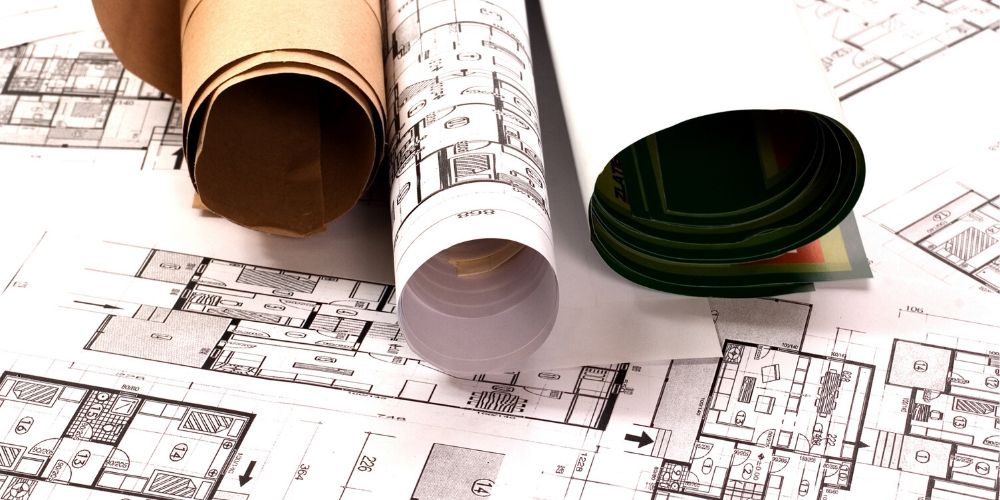Crawl spaces are often overlooked in the construction of a home, but they play an important role in structural integrity and air quality. For this reason, there are building codes that require crawl space encapsulation. They are designed to provide occupants with a safe, dry, and energy-efficient living space.
Many factors are involved in ensuring a successful crawl space encapsulation, from insulation to ventilation. It is important to understand these requirements and regulations to ensure the safety and quality of your living environment. Let’s take a closer look at the common crawl space encapsulation building code requirements.
Crawl Space Encapsulation Building Code Requirements Are As Follows:
1. Ventilation Requirements
If your crawlspace is not finished and is being used as a basement, it needs to be ventilated. Vents should be placed anywhere on the foundation or basement walls. The size of the vent openings must have at least 1 ft² for every 150 ft² of floor area in the crawlspace. If a Class 1 vapor retarder is installed, then the size of the vent can be increased to 1 ft² for every 1,500 ft² of floor area.
As per the 2015 IRC – Section R408.3, foundation wall vents are not required for proper moisture control if your crawlspace is encapsulated with a Class 1 vapor retarder and has a conditioned air supply.
2. Vapor Retarder Prerequisites
A vapor retarder is necessary if ventilation requirements are to be met. The minimum size for the vents should follow the stated requirements and must not be reduced in any way. Failure to adhere to the standards can result in moisture getting trapped in the crawlspace, leading to potential damage.
Class I vapor retarders should be installed over the entire surface of the earth, along with 6″ overlaps at each joint and a 6″ minimum extension up the foundation wall. Minimum 6-mil polyethylene vapor retarders must cover any exposed dirt (2012 IRC Section R408.2). For added protection, all seams must be taped for security (2015 IRC – Section 408.3.1).
Such measures protect against groundwater entry and are necessary for proper crawl space encapsulation methods.
3. Unvented Crawl Space Requirements
Certain conditions will allow for an unvented crawl space. Here are a few of the code requirements that need to be met:
Conditioned Crawl Space Code (HVAC)
For this, you’ll need to supply at least 1 cubic foot per minute (CFM) of air for every 50 square feet of crawlspace floor area through a dedicated duct from your home’s HVAC system. It would be best if you had at least one supply vent and one return vent into the crawlspace, and the foundation walls also need to be insulated to comply with this unvented crawl space regulation.
Continuously Operated Ventilation System
You don’t necessarily need vents in an unvented crawl space, but you may be able to use a continuous mechanical ventilation system instead. This will still need to provide at least 1 CFM per 50 square feet of crawlspace floor area, and at least one duct must be attached to the home to balance air pressure. The foundation walls also must be insulated for this requirement.
Dehumidifier System
If you choose to use a dehumidifier in the crawlspace, it must be able to remove at least 33 liters of water for every 1,000 square feet of crawl space floor area. This is an acceptable alternative if vents cannot be installed.

4. Drain And Vent Terminations
To ensure the effectiveness of crawl space encapsulation, all drains and vents must be terminated outdoors. The crawl space floor must be graded so that water drains to a sump pump or other suitable drain.
Drains should not be connected to gutters or foundation perimeter drains, and dryer vent pipes should be directed outside the building. Also, the building grade should slope away from the foundation of the crawl space to promote water drainage (Source: 2015 IRC – Sections R405 and P2719).
5. Crawl Space Access
The minimum entry point for spaces below the foundation wall is 16 inches by 24 inches. If the opening is located on an upper floor, it must be a minimum of 18 inches by 24 inches to allow inspection and maintenance. Also, all under-floor areas must have an entry point. This can help ensure that the crawl space is properly maintained and inspected regularly.
6. Insulation Requirements
For a closed crawl space, thermal insulation must be present in the floor system or the exterior walls. Class I vapor retarders must encapsulate the floor and walls when insulation is located within the crawl space. Foam insulation boards must be installed with a thermal barrier to prevent the ignition of the material. Additionally, porous insulation material should not directly contact the ground (2015 IRC – Section R402.2.11 and Appendix N1102.2).
For walls, insulation must begin 3 inches below the top of the masonry foundation wall. Also, the insulation should extend to 3 inches above the top of the footing or concrete floor or 24 inches below the outside finished ground level—whichever is less (2015 IRC – Section R408.3.2.2.2).
7. Damp Proofing For Outside Walls
The exterior walls of a crawl space, if the outside grade is higher than the inside grade, must be equipped with damp-proofing material such as semi-rigid mastic asphalt or rigid materials like brick, stone, mortar, or cement concrete. Adding this material to the top of the footing of the finished grade is also imperative, according to the 2015 IRC Section R406. Doing so ensures that your crawl space protects properly from moisture and other environmental hazards. This can help extend its lifespan significantly.
A 2-inch thick layer of concrete should be poured directly on top of the ground vapor barrier to protect your crawl space from being exposed and moved. You don’t need to use gravel or other drainage materials beneath this barrier.
The floor should be graded correctly so that the concrete surface drains towards one or lower points. Each low spot must have a drain not connected to the roof gutter or foundation perimeter drains. This will allow the space to be properly drained and free of moisture.

8. Height Requirements
The floor of a crawlspace must not be lower than the bottom of the footings unless groundwater can rise above it by at least six inches. If drainage is an issue and water problems persist, then the height of the floor has to match the exterior ground level around your foundation. So keep track of that. Also, ensure that the crawlspace’s total height remains at least 18 inches and never less than 12 inches. This is to ensure structural stability and safety.
9. Flood Openings
Called ‘flood flaps,’ flood openings must be installed in homes in a flood zone. These exits allow rising water to escape, thus protecting the foundation of your property from damage. The standard requires that at least one side of a crawl space floor is set equal to or above the exterior grade. This will ensure that floodwater can exit with ease.
Also, openings must be two-way. This means they must allow water to exit and enter the crawl space to ensure adequate drainage. Lastly, flood flaps should be constructed of a non-absorbent material such as metal or plastic. These materials prevent corrosion and should last for many years.
10. Materials For Vent Covers
To keep pests and moisture out of your crawlspace, ensure your vents are covered with an approved material. Materials that comply include perforated sheet metal (1.8-mm thick), extruded aluminum brick vents, hardware cloth fencing, cast iron grills, and wire mesh (at least 3.2-mm thick).
They should all be securely attached to the exterior walls of the crawlspace and painted with rust-resistant paint. Additionally, ensure all exposed edges of the covering material are sealed with a sealant or caulking to prevent moisture from entering.
11. Foundation Walls And Piers Requirements
All foundation walls must meet certain requirements set by your local building code. They must be structurally sound and free of any cracks or deterioration that may cause structural damage in the future. Additionally, all foundation walls and piers must be waterproofed with a moisture-resistant material to prevent water from entering the crawl space. Any openings in the foundation wall should also be sealed with caulk or another approved sealant.
As per Section R324, foam plastic insulation installers must comply with guidelines R409.8.1.1.1-2 if installing expanded polystyrene, extruded polystyrene, or polyisocyanurate on the inside surface of exterior foundation walls.

12. Air Sealed Crawl Space Walls
Crawl space air sealing shall be done to prevent the influx of outside air into the crawl space. Vents, openings, and other forms of ventilation are not permitted in foundation walls or ventilated porch foundations. If outdoor packaged equipment is utilized, solid blocking and sealants must be employed to enclose any gap between the exterior wall opening and smaller supply ducts that pass through it.
As per section R408.3.2.2.2 of the 2015 International residential code (IRC), if a Class I vapor retarder is installed on the ground and up the vertical wall a minimum of 6 inches, mechanical exhaust ventilation that runs continuously or a conditioned air supply must be present in the crawl space. Mechanical drying methods such as permanent dehumidifiers, HVAC supply air, conditioned air from living spaces above, or exhaust fans are acceptable.
13. Permeance
For a healthier home, it’s recommended to use materials with a higher gauge than the IRC requirement of a 6-mil vapor retarder. This is because 6-mil poly, commonly made of recycled plastics, isn’t strong enough to prevent moisture vapors from passing. Invest in lower permeance material that meets and exceeds ASTM E1745 standards to minimize future problems.
As many local building departments enforce stricter regulations regarding crawl space enclosures, ensure you use products with permeance below 0.01 perms before and after conditioning.
Conclusion
Following all the building code requirements by IRC can ensure that your crawl space is safe, secure, and properly protected from potential hazards. With these steps, you can have peace of mind knowing that your home is protected and that you’re investing wisely for the future.
Get started creating an encapsulated crawl space today and see the difference it can make in your home!


